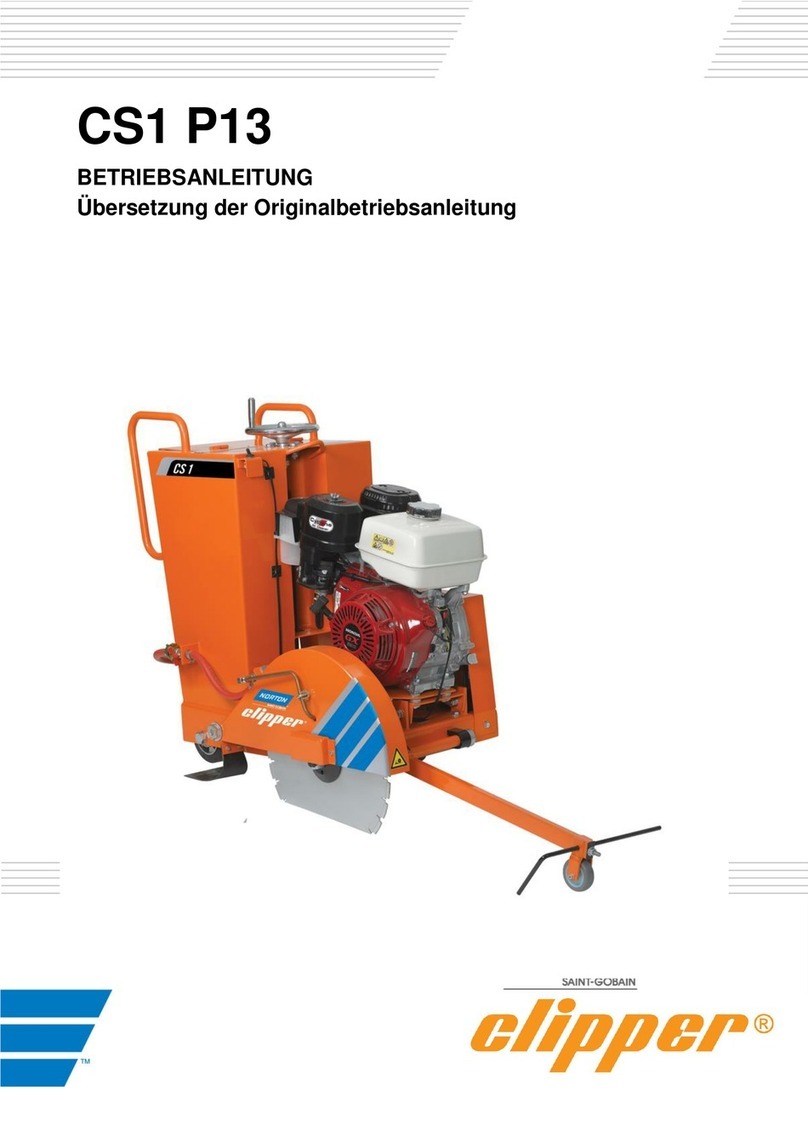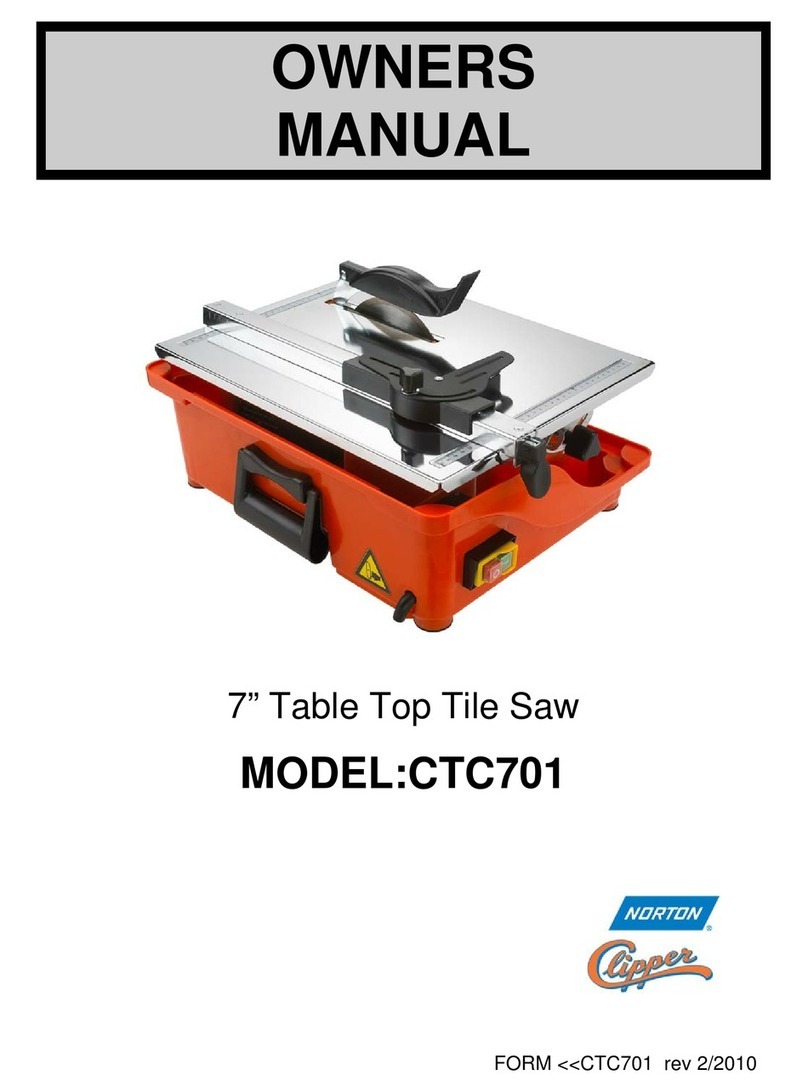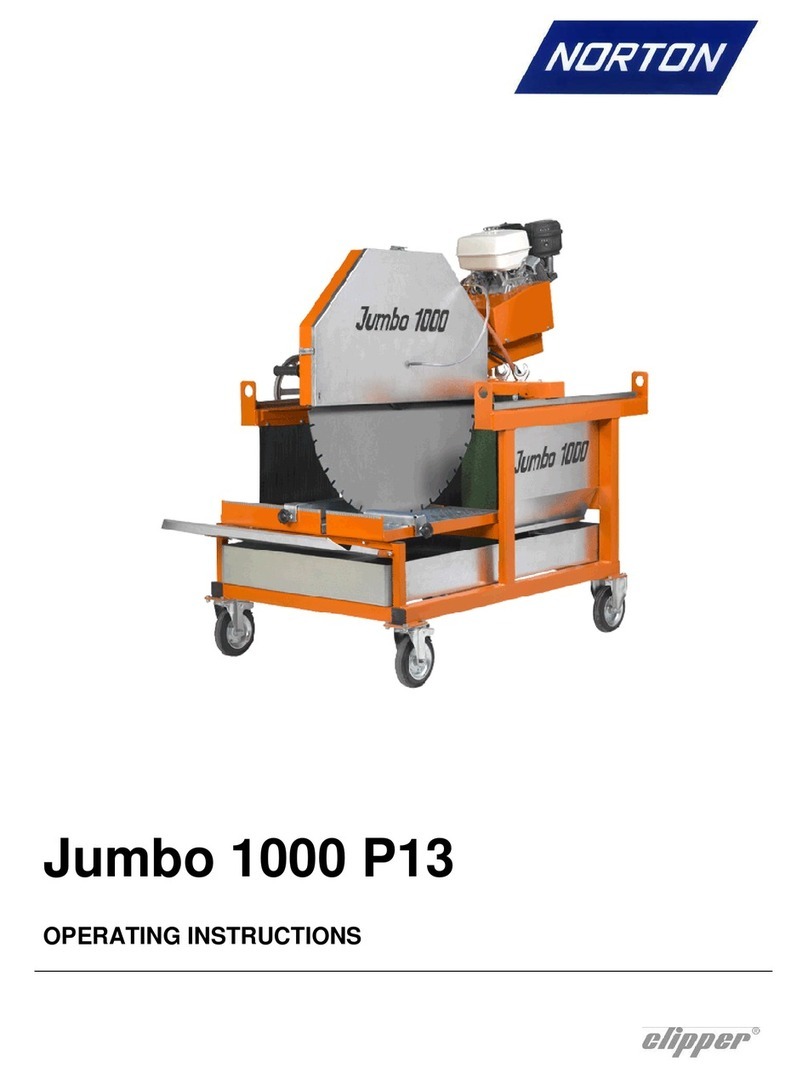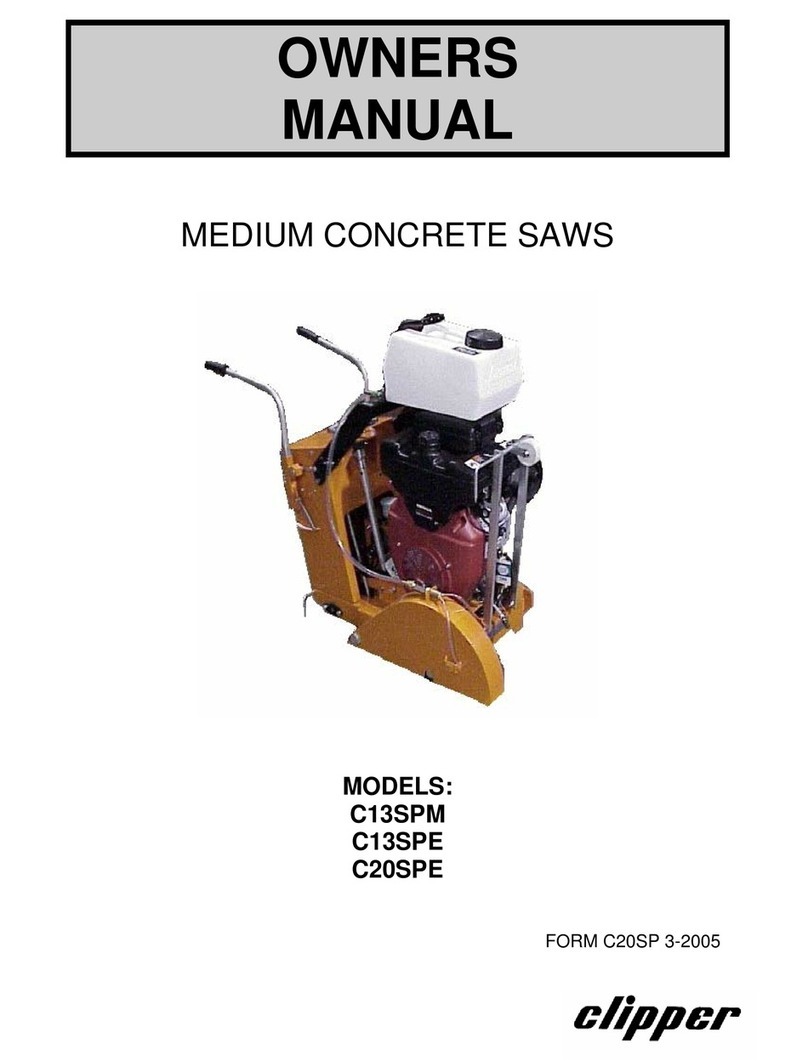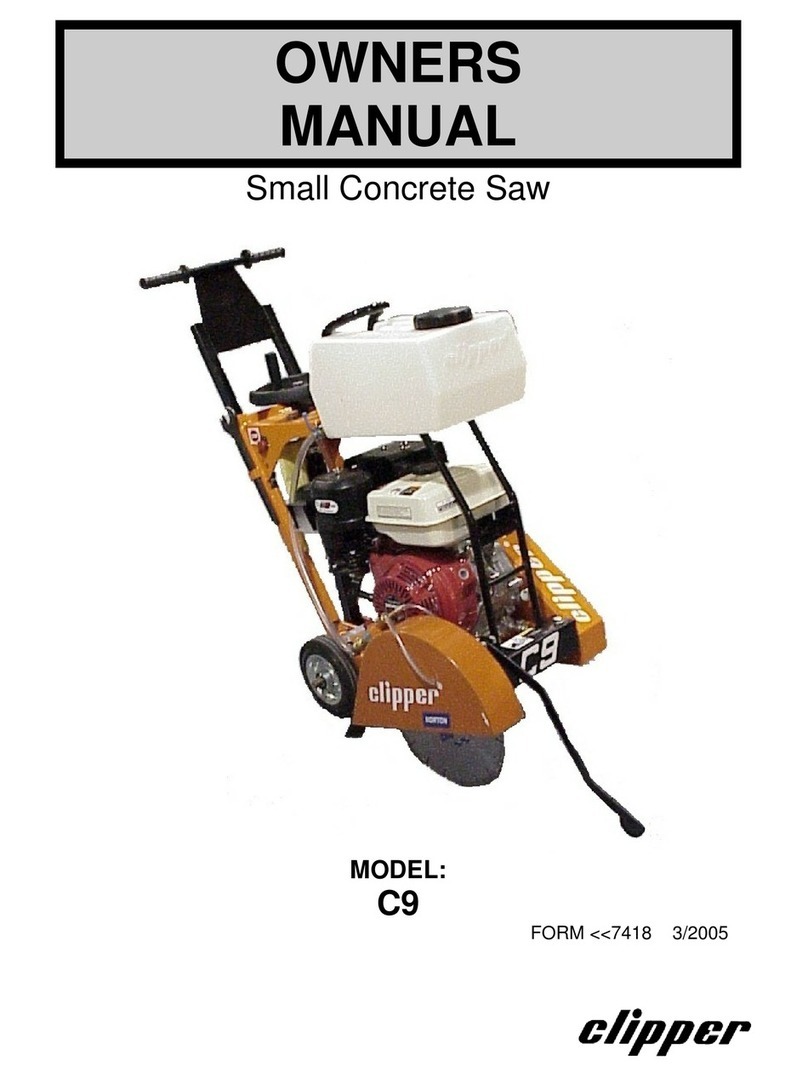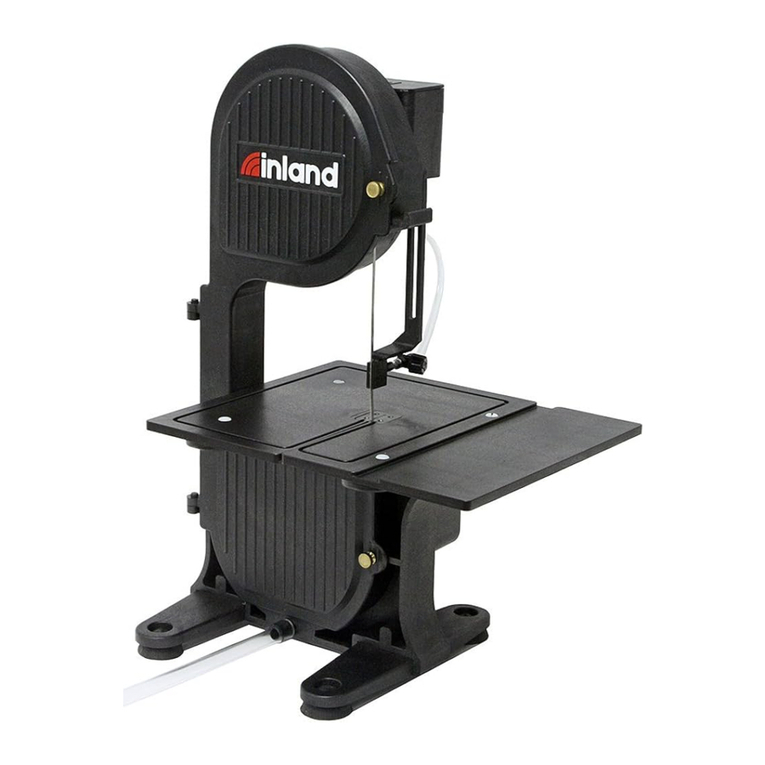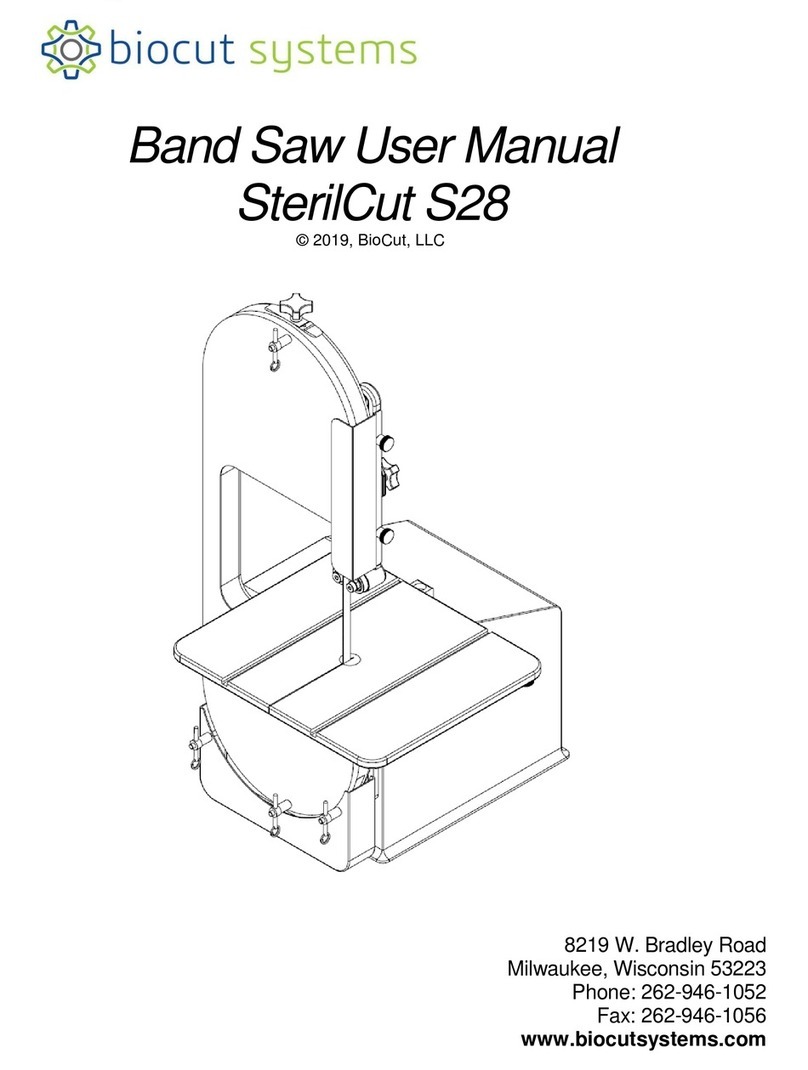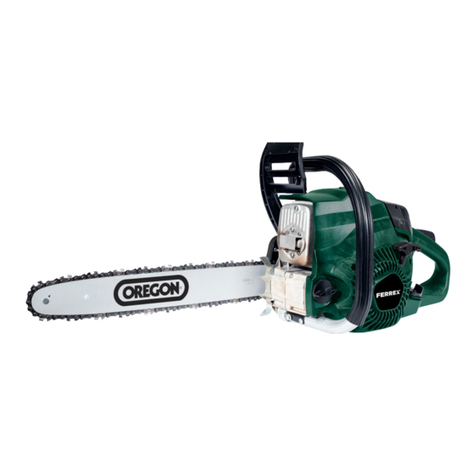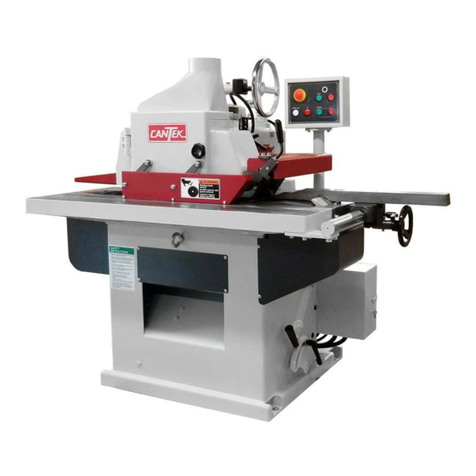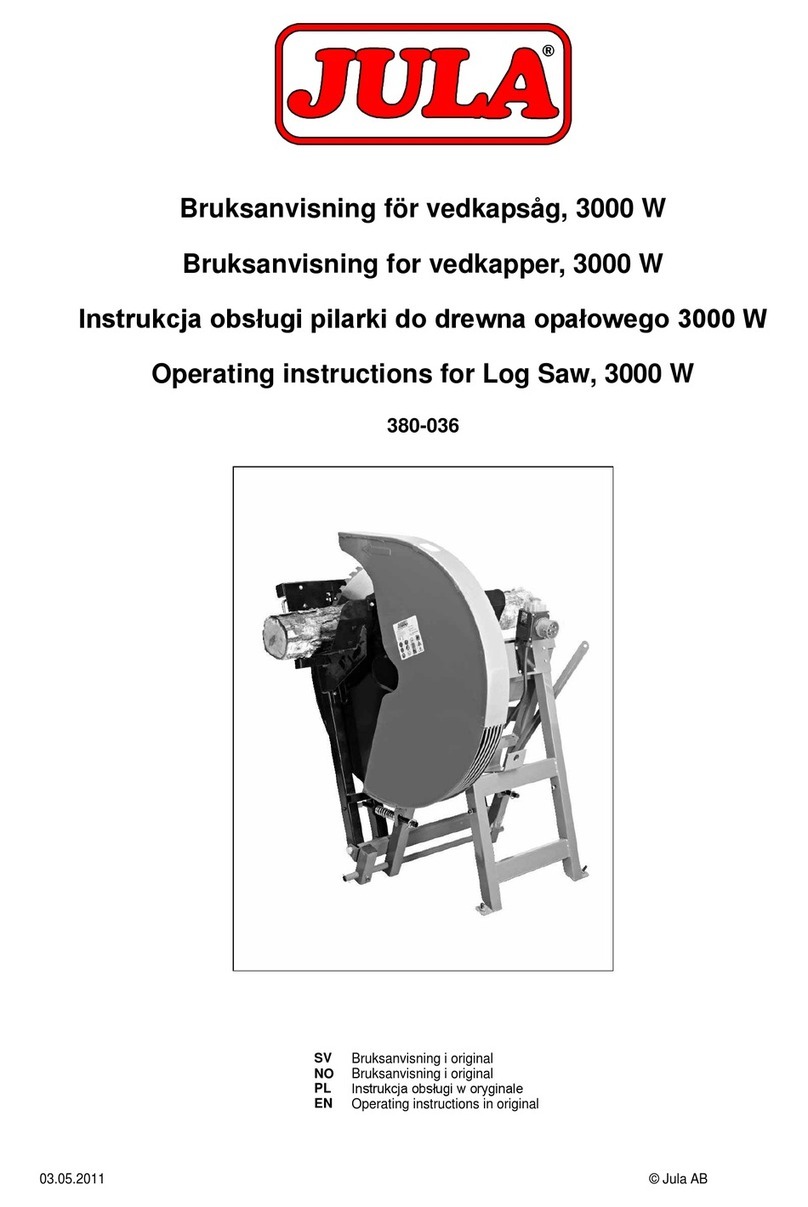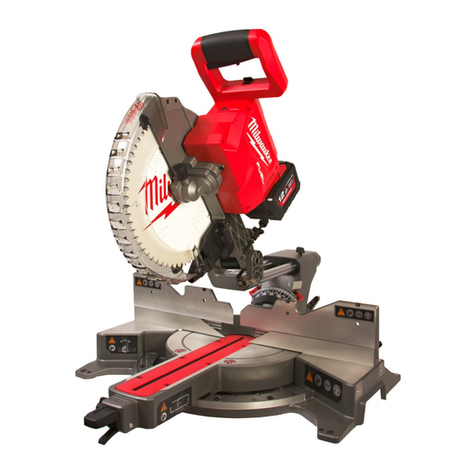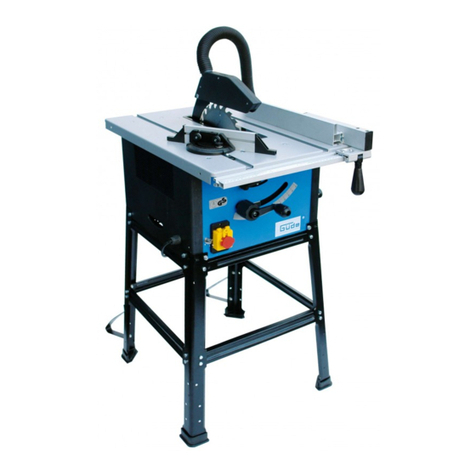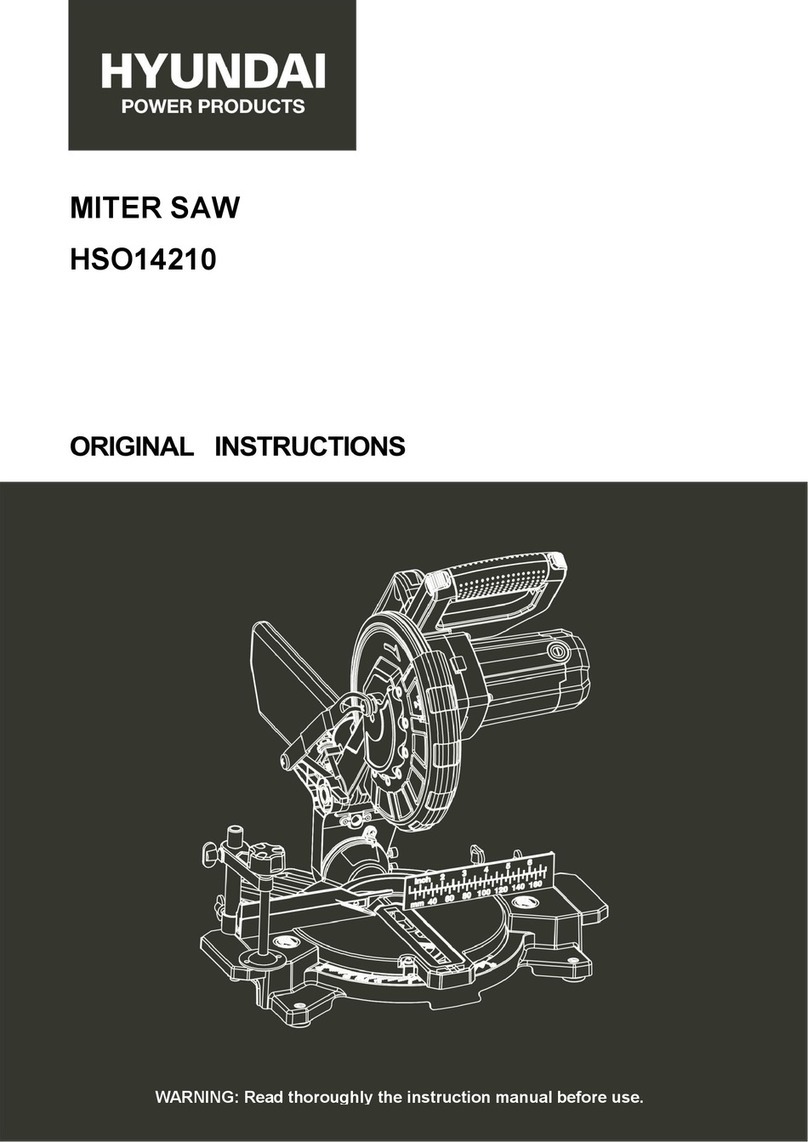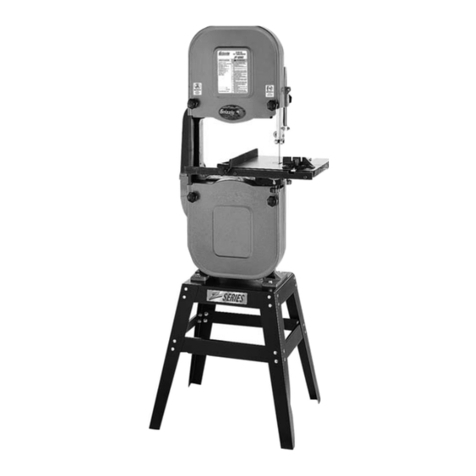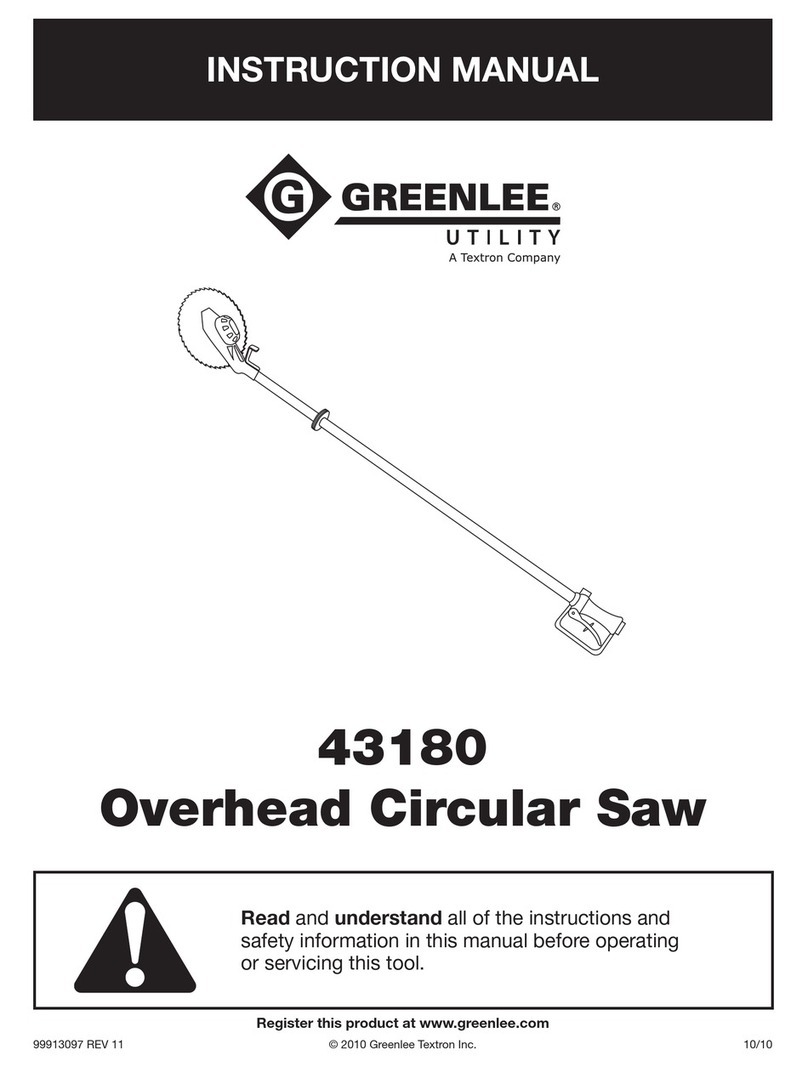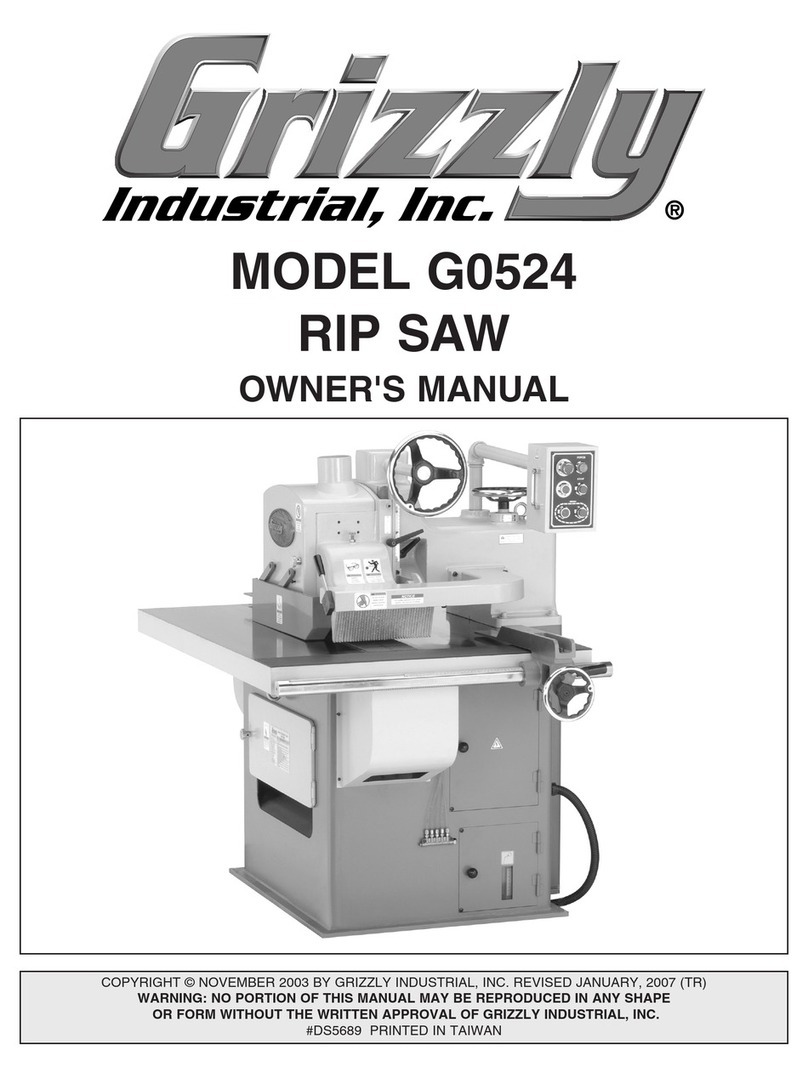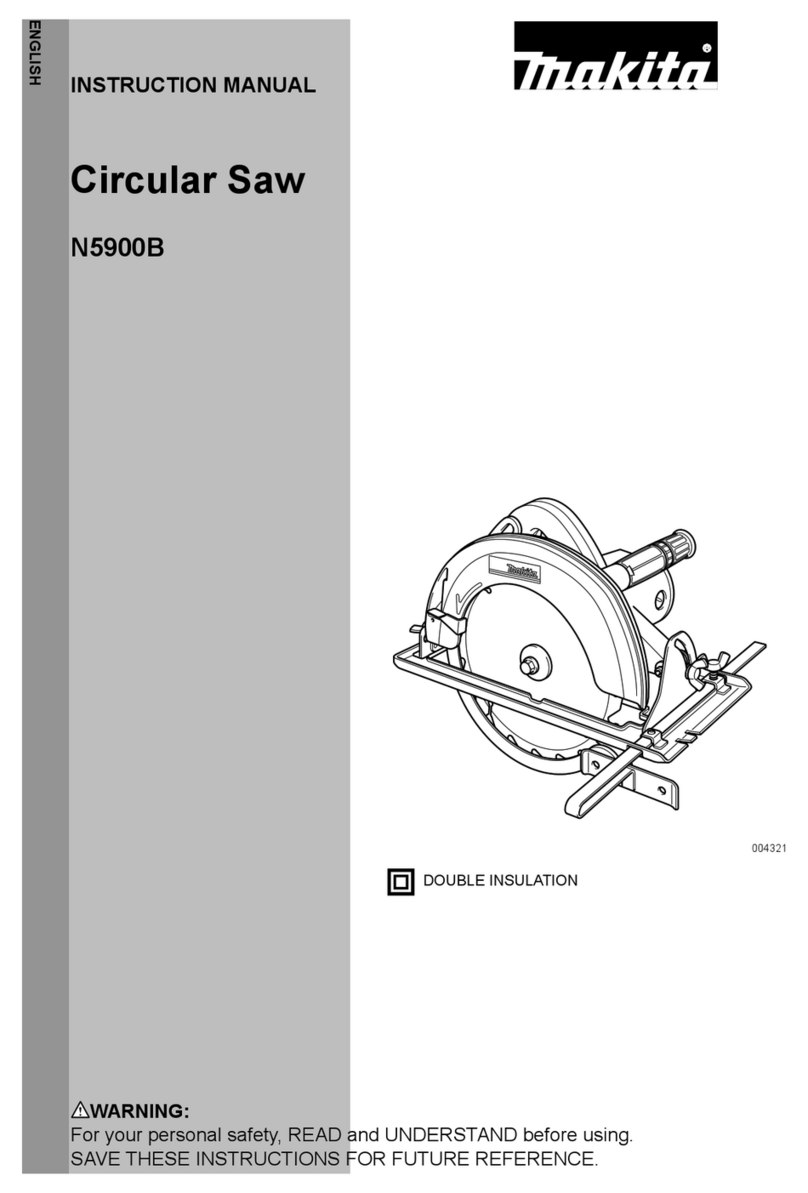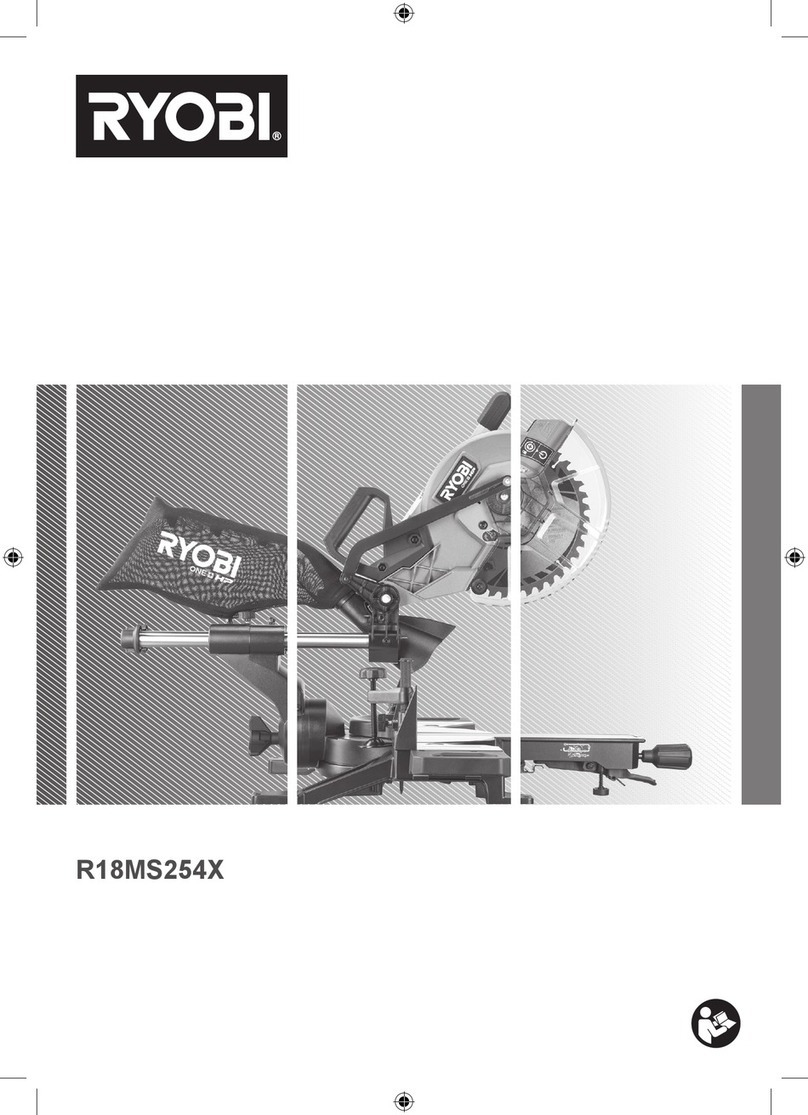Clipper C1316SS User manual

OWNERS
MANUAL
MEDIUM CONCRETE SAWS
MODELS:
C1316SS C1316SM C2016SS
C1320SS C1320SM C2020SS
C2024SS
FORM C2020SS rev 5-11

2
WARRANTY
Norton warrants all products manufactured by it against defects in
workmanship or materials for a period of one (1) year from the date of
shipment to the customer.
The responsibility of Norton under this warranty is limited to
replacement or repair of defective parts at Norton's Stephenville,
Texas facility, or at a point designated by it, of such part as shall
appear to us upon inspection at such point, to have been defective in
material or workmanship, with expense for transportation borne by
the customer.
In no event shall Norton be liable for consequential or incidental
damages arising out of the failure of any product to operate properly.
Integral units such as gasoline engines, electric motors,batteries,
tires, transmissions, etc., are excluded from this warranty and are
subject to the prime manufacturer's warranty.
This warranty is in lieu of all other warranties, expressed or implied,
and all such other warranties are hereby disclaimed.
Important: Before placing equipment in operation, record the following
information.
MODEL:_________ SERIAL NO.___________
PURCHASE FROM: _____________________
ADDRESS: ____________________________
CITY_______ STATE ______ ZIP ________
TELEPHONE NO. ______________________
Before using this equipment, make sure that person using it
read and understand the instructions in this owners manual.

3
Table of Contents
CONTENTS PAGE
I. Preparation
A. Safety Precautions 4-6
B. Assembly 7
C. Concrete Saw Specifications 8
II. Operation
A. Blade Installation 9-11
B. Changing the Blade Side 12-14-
C. Starting The Engine 14
D. Water Supply 14-15
E. Controls 15-17
F. Operating The Saw 17-19
G. Cutting Technique 19-20
H. Lead-Off Adjustment 20
III. Maintenance
A. Engine 21-22
Engine Warranty 23
B. Bearings 24
C. V-Belts 25
D. Depth Control 26
E. Transmission 26
F. Self-Propelling Unit 27-28
G. Electrical Diagram 13HP Manual Start 29
Electrical Diagram 13HP Electric Start 30
Electrical Diagram 20HP Electric Start
GX620TXF2 Machine Serial Numbers 07051033 and Higher 31
IV. Parts List Section
A. Ordering Information 33
Common Replacement Parts 33
B. Assembly Drawings/Service Parts Listing 34-49
Frame Common Group 34-35
Raise Axle Group 36-37
Transmission Group 38-40
Blade Shaft and Engine Group 41-42
Blade Guard Group 43-44
Controls and Console Group 45-46
Depth Adjustment Group 47-48
Optional Water Tank Group 49-50
Read Owners Manual Before Use
Safety Alert Symbol: Information Following This Symbol Is Very
Important.

4
I. PREPARATION
A. Safety Precautions
Important! The following safety precautions must always be observed.
Hazard Symbols
Fuel (gasoline) is extremely flammable and its vapors can explode
if ignited. Store gasoline only in approved containers, in well
ventilated, unoccupied areas approved, and away from sparks or
flames. Don not fill the saw fuel tank while the engine is hot or
running. Do not start the engine near spilled fuel. Never use the
fuel as a cleaning agent
Engine components can get extremely hot from operation. To
prevent burns, do not touch the engine or related parts while the
engine is running or immediately after it is turned off. Never
operate the engine with any heat shields or guards removed.
Keep all guard in place when operating any piece of equipment
Keep hands, feet, hair, and clothing away from all rotating parts
Lethal Exhaust Gas use only in well ventilated areas. Engine
exhaust gases contain poisonous carbon monoxide which is
orderless, colorless, and can cause death if inhaled. Avoid
inhaling exhaust fumes, and never run the engine in a closed
building or confined area
Never tamper with the governor components of settings to
increase the maximum speed. Severe personal injury and damage
to the engine or equipment or equipment can result if operated at
speed above maximum. Always obey the maximum speed rating
of blade.
DO NOT LIFT THE SAW BY THE HANDLE BARS

5
Dust and Silica Warning
Grinding/cutting/drilling of masonry, concrete, metal and other materials can
generate dust, mists and fumes containing chemicals known to cause serious or
fatal injury or illness, such as respiratory disease, cancer, birth defects or other
reproductive harm. If you are unfamiliar with the risks associated with the
particular process and/or material being cut or the composition of the tool being
used, review the material safety data sheet and/or consult your employer, the
material manufacturer/supplier, governmental agencies such as OSHA and
NIOSH and other sources on hazardous materials and make certain to comply
with all product warnings and instructions for the safe and effective use of the
material being cut. California and some other authorities, for instance, have
published lists of substances known to cause cancer, reproductive toxicity, or
other harmful effects.
Control dust, mist and fumes at the source where possible. In this regard use
good work practices and follow the recommendations of the
manufacturer/supplier, OSHA/NIOSH, and occupational and trade associations.
Water should be used for dust suppression when wet cutting is feasible. When
the hazards from inhalation of dust, mists and fumes cannot be eliminated
through engineering controls such as vacuum and/or water mist, the operator
and any bystanders should always wear a respirator approved by NIOSH/MSHA
for the material being cut.
Use Approved:
Eye Protection Hearing
Protection Respiratory
Protection Head Protection

6
1. Before mounting any blade on the saw, the blade should be
inspected for any damage which might have occurred during
shipment, handling or previous use.
2. The blade collars and arbors should be cleaned and examined for
damage before mounting the blade.
3. The blade must be properly fitted over the arbor with the drive pin on
the outside collar projecting through the drive pin hole on the blade
and inside collar.
4. The blade shaft nut, which is a left hand thread nut, must be
tightened securely against the outside blade shaft collar.
5. The blade must be operated within the specified maximum operating
speed listed on the blade.
6. Turn water control valve to full to provide adequate coolant (5 to 8
gallons per minute) for diamond blades and wet cutting abrasive
blades. Insufficient coolant could result in severe blade breakage or
diamond segment separation.
7. The blade guard must be in place with the nose guard down and
locked when the saw is running.
8. The operator should wear safety glasses and any other appropriate
safety equipment.
9. When starting the saw, the operator should stand away and to the
side of the blade.
10.If for any reason the saw should stall in the cut, raise the blade out of
the cut. Check the outside blade shaft collar and nut for tightness.
Inspect the blade for damage before restarting the saw. User caution
when resuming a cut. Be certain that the blade is in alignment with
the previous cut.
11.During cutting operations, do not exert excess side pressure on the
handles as a method of steering. Do not force the blade into the cut
by lowering the blade too fast or by pushing the saw too fast.
You Are Responsible For Your Safety!!!

7
I. PREPARATION
B. Assembly
The self-propelled concrete saws are shipped completely assembled and
ready for use except for diamond blade, gasoline, oil, and handle bar. Inspect
the saw for shipping damage. If any damage is found, contact the shipper
immediately and file a freight claim. The Norton Company is not responsible
for any freight-related damages. Remove the saw from the pallet. Reverse
the position of the handlebars so that the handle bar sticks out towards the
operator. Adjust the handlebars to the desired height. Attach the handlebars
to the saw with the supplied hardware. For electric start models fill and check
the electrolyte level and charge the battery. Read and understand the
remaining sections of this Owners Manual. NOTE: Do not install the blade
until it is time to use the saw. ANSI regulations prohibit the transportation of
any concrete saw with the blade installed.

8
C. C13xx/C20xx Concrete Saw Specifications
Dimensions/Weight C1316SS
C1320SS C1316SM
C1320SM C2016SS
C2020SS
C2024SS
Length (Transport) 56 inch (1142 mm) 56 inch (1142 mm) 56 inch (1142 mm)
Width 26 inch (660 mm) 26 inch (600 mm) 26 inch (600 mm)
Height 40 inch (1016 mm) 40 inch (1016 mm) 40 inch (1016 mm)
Weights 385 lbs (175 kg) 405 lbs (175 kg) 428 lbs (195 kg)
Engine
Engine Mfg. Honda Honda Honda
Model GX390 GX390 GX620
Spec No. GX390K1QXC9 GX390UT1QAE2 GX620TXF2*
Engine Type Single Cylinder
4 Cycle Single Cylinder
4 Cycle Two Cylinders
4 Cycle
Horse Power 13 hp (9.5kW)
@ 3,600 rpm 13 hp (9.5kW)
@ 3,600 rpm 20 hp (14.9kW)
@ 3,600 rpm
Max Torque 19.5 ft-lbs (26.5
Nm, 2.7 kgf-m)
@ 2,500 rpm
19.5 ft-lbs (26.5
Nm, 2.7 kgf-m)
@ 2,500 rpm
32.5 ft-lbs (44.13
Nm, 4.50 kgf-m)
@ 2,500 rpm
Cooling System Air Air Air
Oil Capacity 1.1 liter
(1.16 US qt) 1.1 liter
(1.16 US qt) 1.8 liter
(1.90 US qt)
Fuel Capacity 6.5 liter
(1.79 US gal) 6.5 liter
(1.79 US gal) 8.03 liter
(2.12 us gal)
Fuel Type Unleaded Gasoline
(86 pump octane) Unleaded Gasoline
(86 pump octane) Unleaded Gasoline
(86 pump octane)
Low Oil Sensor Yes Yes Yes
Air Filtration Four Stage
Honda Cyclone Two Stage
Honda Four Stage
Honda
Start Type Manual Electric Electric
Characteristics
Max Blade 20” (356 mm) 20” (356 mm) 24” (406 mm)
Depth of Cut 24” (406 mm) -NA- -NA- 9-1/2 inch (241 mm)
20” (356 mm)
7-1/2 inch (191 mm) 7-1/2 inch (191 mm) 7-1/2 inch (191 mm)
16” (305 mm)
5.50” (140 mm) 5.50” (140 mm) 5.50” (140 mm)
Arbor Bore 1 inch (25.4 mm)
Blade Shaft Locking Device Machined Into Flats Of Tight Collar
Blade Shaft Speed 2600 rpm,
Depth Control Hand Wheel With Screw Feed
Depth Lock Standard
Number Of V-Belts 4
Blade Guard Type Pivoting All Steel Construction
Right or Left Side Cutting Standard
Lifting Bale Built In
Handle Bars Adjustable
Recessed Rear Wheels Standard
Front Wheel Wheel 5 x 2 x ¾ With Roller Bearing
Rear Wheel Wheel 6 x 2 x ¾ With Roller Bearing

9
II. OPERATION
Read and understand this manual before
running or using the machine!
A. Installing the Blade
1. Insure that the Ignition Power Key Switch is in the OFF position and
then disconnect the spark plug.
2. Remove the blade shaft nut, (NOTE: Operator’s Right side is a left
hand thread and the Operator’s Left side is right hand thread), and
remove the outside collar. Rotate the Blade Guard to gain better
access to the Blade Shaft Nut, Loose Collar, Blade, and Tight Collar.
To Rotate the Blade Guard pull the Blade Guard Retaining Pin out
away from the Blade Guard Frame Bayonet and the rotate the Blade
Guard up and out of the way.
Blade Guard Retaining Pin with Guard Rotated for Access to Blade Shaft
Nut and Collars
3. Clean off any foreign particles on the clamping surfaces of both collars
and on the mounting surface of the blade and also inspect the drive pin
for damage. Replace any damage collars or pins before using the
machine.
Blade Guard
Retaining Pin

10
4. Inspect the blade for any damage, cracks, burnt or blue areas, missing
segments, and roundness of blade. Also inspect the arbor hole and
drive pin hole to insure both are round. If any problems are found do
not use the blade. In addition check that the blade is the correct
specification for the application.
Use only Clipper Diamond Blades. This machine was not
designed for the use with abrasive blades.
5. Place the blade on the blade shaft, lining up the drive pin hole in the
blade with the drive pinhole in the inside collar. NOTE: Diamond
blades are direction dependent so verify the direction of rotation of the
blade. The machine will rotate the blade into the work surface (down
cut). Place the blade guard in position and insert the blade guard
retainer pin. Never operate the saw without the blade guard or blade
guard retainer pin in position See the following diagram Blade
Installation.
Blade Installation
6. Slide the outside blade shaft collar onto the blade shaft. The drive pin
on the outside collar must project through the drive pin hole in the
blade and into the inside collar.
7. Tighten the blade shaft nut (counter-clockwise for the Operator’s Right
Hand side and clockwise for the Operator’s Left hand side).
Blade Shaft Nut
Outside
Collar
Drive Pin
Drive Pin Hole
Blade Guard
Inside Collar
Directional Arrow
Blade Installed
NOTE: Blade Guard is shown
open for clarity. Do not operate
with the Blade Guard O
p
en.
Arbor
Hole
Blade

11
8. Insure that the Blade Guard is lowered and the Blade Guard Locking
pin is secure. Close Blade Guard Nose. See Blade Installed
diagram below.
Blade Installed
9. Reconnect the spark plug.
Observe rotation arrow on blade and do not exceed maximum RPM
stamped on blade.
NOTE: Organic bonded blades (A) must have a blotter. The blotter
(B) must extend past the blade collar contact area as shown.
Blades Use Only Norton Clipper Diamond Blades

12
B. Changing the Blade Side:
1. Insure that the Ignition Power Key Switch is in the OFF position and
then disconnect the spark plug.
2. Remove the blade shaft nut, (NOTE: Operator’s Right side is a left
hand thread and the Operator’s Left side is right hand thread), and
remove the outside collar.
3. Clean off any foreign particles on the clamping surfaces of both the
outside and inside collars and on the mounting surface of the blade
and inspect the both collars for any damage and also inspect the drive
pin for damage. Reinstall the Blade Shaft Collars to the machine.
NOTE: Replace any damage collars or pins before using the machine.
4. Inspect the blade for any damage, cracks, burnt or blue areas, missing
segments, and roundness of blade. Also inspect the arbor hole and
drive pin hole to insure both are round. If any problems are found do
not use the blade. In addition check that the blade is the correct
specification for the application.
5. Remove the Blade Guard from the machine by unscrewing the Blade
Guard Pivot Bolt from the rear of the Blade Guard. NOTE: Keep the
½” Flat Washer and ½” Lock Washer on the Bolt.
Blade Pivot Bolt Removal
6. Remove the Blade Shaft Guard by removing the Blade Shaft Guard
retaining bolts. See Blade Shaft Guard Removal diagram below.
Blade Guard
Pivot Bolt
½” Lock Washer
½” Flat Washer

13
Blade Shaft Guard Removal
7. Place the blade on the blade shaft, lining up the drive pin hole in the
blade with the drive pinhole in the inside collar. NOTE: Diamond
blades are direction dependent so verify the direction of rotation of the
blade. The machine will rotate the blade into the work surface (down
cut).
7. Slide the outside blade shaft collar onto the blade shaft. The drive pin
on the outside collar must project through the drive pin hole in the
blade and into the inside collar.
8. Tighten the blade shaft nut (counter-clockwise for the Operator’s Right
Hand side and clockwise for the Operator’s Left hand side).
9. Place the blade guard in position and insert and tighten the Blade
Guard Pivot Bolt. Never operate the saw without the blade guard or
blade guard retainer pin in position See the diagram Blade Shaft
Installation on page 10 and Blade Installed on page 11.
10.Insure that the Blade Guard is lowered and the Blade Guard Locking
pin is secure. Close Blade Guard Nose.
11.Attach the Blade Shaft Guard to the opposite side of the machine.
12.Remove the Pointer and reattach it to the Operators Left hand side of
the machine. NOTE: Reverse the orientation of the Pointer
13.Reconnect the spark plug.
Blade Shaft Guard

14
C. Engine Operation
Prior to attempting to operate the engine, read the information
contained in the engine owner's manual. An engine owner’s manual
is supplied with every gasoline powered concrete saw.
1. Check Oil: Add oil if low. Refer to the engine owner's manual for the
recommended SAE viscosity grades. Capacity of oil is 1.1 liters (1.16 US qt)
2. Check Fuel: Fill if low. Use only unleaded gasoline with a pump sticker
octane rating of 86 or higher is recommended. Never use an oil and
gasoline mixture!
3. Air Cleaner: Never run the engine without the air cleaner! Rapid engine
wear will result from contaminants being drawn through the carburetor and
into the engine.
4. Engine Starting: Refer to the engine owner's manual for proper engine
starting procedure.
5. Engine Speed: Always run the engine and the proper speed for the blade
being used. Never run the blade at a higher speed that it is rated for. See
the Blade Speed chart located on the machine’s console or located in the
manual under the heading “Operating the Saw”
D. Water Supply
Pressurized source: Turn the water control to full "ON" when using wet
cutting blades. The required flow rate is 4-6 gallons per minute.
Optional Water Tank on saw: This supply is designed for use with dry
blades to keep the dust levels down. The tank will not supply the proper
water flow rates when used with wet cut only blades. Do not drink the
water from this tank. Fill the tank with water only. Close the water tank
valve. Attach the saws water supply hose to the tank outlet. Fill the tank
with water. The capacity of the tank is 5 US Gallons. When you are ready
to cut, adjust the water supply rate until a fine mist or a slow trickle is
made. The use of water greatly decreases the amount of dust produced
during the cutting process, aids in the cooling of the blade, and provides
additional stability.
Use Only Water In The Water Tank
Do Not Drink From The Tank

15
E. Controls
Raise
Levantar
RPM/Hours (RPM/Horas)
Lower
Bajar
Foward
Adelante
Reverse
Reversa
3600 RPM
Ignition
Ignicion
Emergency
Stop
Paro de
Emergencia
Transmission
Transmisión
Blade Dia Eng rpm Eng Pulley
Diameter Blade Shaft
RPM
Blade Shaft
Pulley Dia
Diametro de
Disco Motor rpm Diámetro en
Polea MotorFlecha Disco
RPM
Diámetro en
Polea de
Flecha Disco
16" (406mm) 3,600 rpm 3.15" (80mm) 2,520 rpm 4.5" (114mm)
16" (406mm) 3,600 rpm 3.15" (80mm) 2,520 rpm 4.5" (114mm)
20" (508mm) 3,600 rpm 3.15" (80mm) 2,520 rpm 4.5" (114mm)
24" (609mm) 3,600 rpm 2.65" (67mm) 2,120 rpm 4.5" (114mm)
Blade Speed Chart
Tabla de Velocidad
Del Disco
Throttle
Acelerador
Depth Control Hand Wheel:
Controls the cutting depth of the blade. Rotate Clockwise to raise and
counter clockwise to lower the depth of cut.
Fuel Tank (20 HP Only):
An internal all metal fuel tank is standard equipment for 20 HP models
only (C2016, C2020, C2024, PC2016, PC2020,and PC2024). All 13 HP
models have a fuel tank attached to the top of the engine. To fill the Fuel
Tank remove the Fuel Cap slowly, fill tank to approximately 1-½” below
the bottom of the Fuel Tank Neck and reattach the Fuel Cap. Do not over
fill the tank. Avoid fuel spills and contact with fuel. Only re-fuel in well
ventilated areas and way from sparks and open flames.
Tachometer/Hour Meter
Emergency Kill
Switch
Fuel Tank
20 HP ONLY
Transmission
Engage/Disengage Lever
Speed
Control Lever
Engine
Throttle
Engine Ignition
Switch
Depth Control
Hand Wheel
Choke
20 HP ONLY

16
Transmission Engage/Disengage Lever:
Controls the Engagement and Disengagement of the Transmission. Push
down to Engage and pull up to disengage the transmission. Only operate
the Transmission Engage/Disengage Lever when the machine is NOT
moving. Operation of the Transmission Engage/Disengage Lever while
the machine is moving may damage the Rear Wheels. When the
Transmission Engage/Disengage Lever is in the Disengage position the
machine can be moved with out the engine running. NOTE: When
parking the saw, it should always be left in the Engaged position, Speed
Control Lever in the neutral position, the engine OFF, and perpendicular
(right angle) to the grade (hill).
Speed Control Lever:
Controls the forward and reverse speed of the Transmission. To increase
the forward speed push the lever forward with the engine running at full
speed and the Transmission engaged. To reverse move the Speed
Control Lever towards the rear of the machine. NOTE: The further
forward or reverse the Speed Control Lever is moved the faster the
machine will move in this direction. To place in a neutral speed condition
place the Speed Control Lever in the center. NOTE: Over time the
neutral position may change slightly due to cable stretch and mechanical
component wear. Either re-adjust the Transmission Control Cable
Linkage or move the Transmission Speed Control Lever to it’s new
position.
Choke 20 HP ONLY:
Units with a 20 HP Engine (C2016SS, C2020SS, and C2024SS) are
equipped with a remote mounted Engine Choke Control. To operate the
Choke pull the control lever out away from the machine and then follow
the instructions for starting the engine found in the Engine manual. All 13
HP units are equipped with a Choke control attached to the Engine below
the Air Cleaner on the Operator’s Right Hand Side.
Engine Throttle:
The Engine Throttle Control allows the operator to adjust the Engine
Speed while starting and operating the machine. To increase the Engine
Speed push the Engine Throttle Control forward. To decrease the Engine
Speed pull the Engine Throttle Control to the rear.

17
Engine Ignition Switch:
The Engine Ignition Switch allows the operator to start and stop the
engine.
Tachometer/Hour Meter:
The Tachometer/Hour Meter shows the engine RPM only when the
Engine is running. The total Engine operating hours (run time) are shown
when the Engine is turned off.
Emergency Kill Switch:
The Emergency Kill Switch will stop the engine when depressed. The
engine will not restart until the Emergency Kill Switch is pulled out. Use
the Engine Ignition Switch for normal shut down of the Engine. Use the
Emergency Kill Switch when a problem arises.
E. Operating the Saw
1. For the engine starting instructions see the Engine manual and follow the
instructions located in section II. Operation sub heading A. Installing the
Blade on page 10.
2. Check the Engine Oil level.
3. Disengage the Self-propelling unit by moving the Transmission
Engage/Disengage lever fully up and place the Speed Control in the
neutral position.
4. Raise the saw to the full upright position. Do not let the blade come in
contact with the ground.
5. Maneuver the saw to the desired starting point.
6. If wet cutting connect the water supply to the saw.
7. Follow the instructions for starting the engine found in the Engine manual.
8. If wet cutting turn on the water supply at the source and then open the
water valves on the saw. Make sure that there is a minimum of two gallons
per minute of water flow!!
9. Be sure that the engine is running at full throttle!!! Check Engine Speed
on the Tachometer to that listed on the Blade Speed Chart located on the
Console is correct for the diameter of Blade being used.

18
Engine and Blade Speed Chart
Blade
Diameter Engine
RPM
Engine
Pulley
Diameter Blade
Shaft RPM
Blade Shaft
Pulley
Diameter
14"
(356mm) 3600 RPM 3.15" (80mm) 2520 RPM 4.5"
(114mm)
16"
(406mm) 3600 RPM 3.15" (80mm) 2520 RPM 4.5"
(114mm)
20"
(508mm) 3600 RPM 3.15" (80mm) 2520 RPM 4.5"
(114mm)
24"
(609mm) 3600 RPM 2.65" (67mm) 2120 RPM 4.5"
(114mm)
10. Slowly lower the blade by rotating the hand wheel clockwise until the
desired depth of cut is reached. Use a reasonable rate of feed. A
reasonable rate of feed will depend on depth of cut, material, and blade.
Normal cutting speeds should be between 2 ft/min in very hard material
and up to 10 ft/min in softer materials. Do not force the blade in to the
cut! If the engine begins to stall or the saw raises out of the cut slow the
forward speed down!
11. For Self-propelled models move the Transmission Engage/Disengage
lever fully to the engage position and then slowly push the Speed Control
forward until the desired speed is reached. If the engine begins to stall or
the saw raises out of the cut slow the forward speed down! The further
the lever is pushed the fast the saw will move.
12. When the end of the cut is reached, slowly raise the blade out of the cut
by rotating the Hand Wheel Clockwise until the blade is at least one (1)
inch above the ground.
13. To place the machine in reverse: move the Speed Control lever towards
the back of the machine. Only move the saw in reverse with the blade in
the raise position. Always place the speed control back in the neutral
position after moving the saw.
14. When moving the saw to a new location be sure that the blade is not
touching the ground and always pay close attention to where you are
moving and where the blade is at all times.
15. To disengage the transmission, place the Speed Control in the Neutral
position and then slide the Transmission Engage/Disengage lever fully to
the “Disengage” position.

19
Caution: Do Not Engage Or Disengage The
Transmission While The Machine Is In The
Forward Or Reverse Positions!
G. Cutting Technique
Lower the blade into the concrete to the required depth by turning the hand
wheel clockwise. Ease the handle slowly forward. Retard the forward
pressure if the saw begins to stall.
Note: For deeper cuts (4 inches or more), several cuts should be made in
incremental steps of 1-1/2 to 2 inches until the desired depth of cut is
reached.
Push the saw steadily forward using the front pointer as a guide. Exert
enough forward pressure so that the engine begins to labor, but does not
slow down. If the saw begins to stall, retard the forward movement until full
rpm is restored to the blade. If the saw stalls, raise the blade out of the cut
before restarting. Avoid excessive side pressure or twisting of the blade in
the cut.
Additional Guide Lines For Sawing:
Understand and follow all of the instruction in this owner’s manual.
If wet cutting, turn on the water supply so that there is a minimum of two
gallons per minute of water flow!
In critically hard aggregate more than a single pass may be needed to cut
the desired depth.
Only move the Engage/Disengage lever while the transmission speed
control is in the neutral position.
Move the transmission speed control slowly.
If the saw stalls in the cut, immediately stop the forward speed and raise
the blade out of the cut. If this is not done the belts can fail or the blade
may be damaged.
Go slowly with a new blade until it opens up, that is, until the diamonds
can be seen and felt.
If the saw leads off excessively check the contact between the drive rollers
and the rear wheels. Small steering corrections may be made by applying
slight pressure to the right or left side of the handle bar. The drive rollers
will need to be cleaned from time to time.

20
G. Lead-Off Adjustment
If the saw tends to pull to one side (lead off), it may be steered by applying
slight pressure to the left or right hand handles.
This manual suits for next models
6
Table of contents
Other Clipper Saw manuals
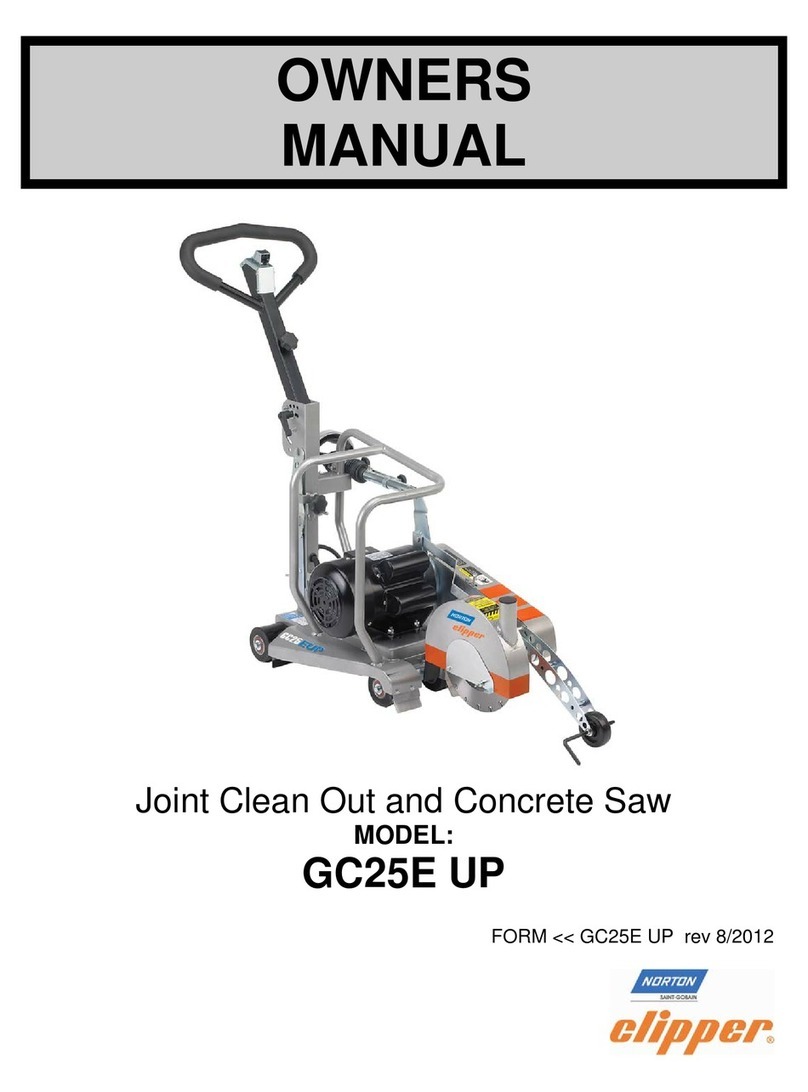
Clipper
Clipper GC25E UP User manual

Clipper
Clipper C65B User manual
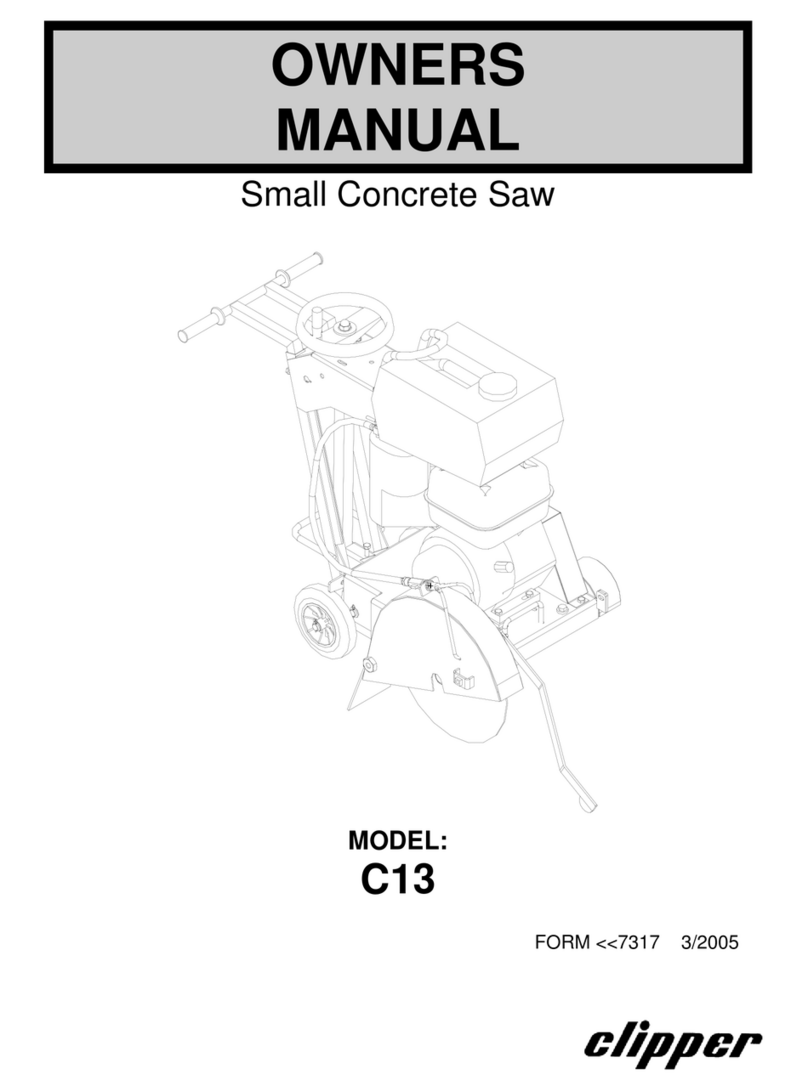
Clipper
Clipper C13 User manual

Clipper
Clipper C13E User manual
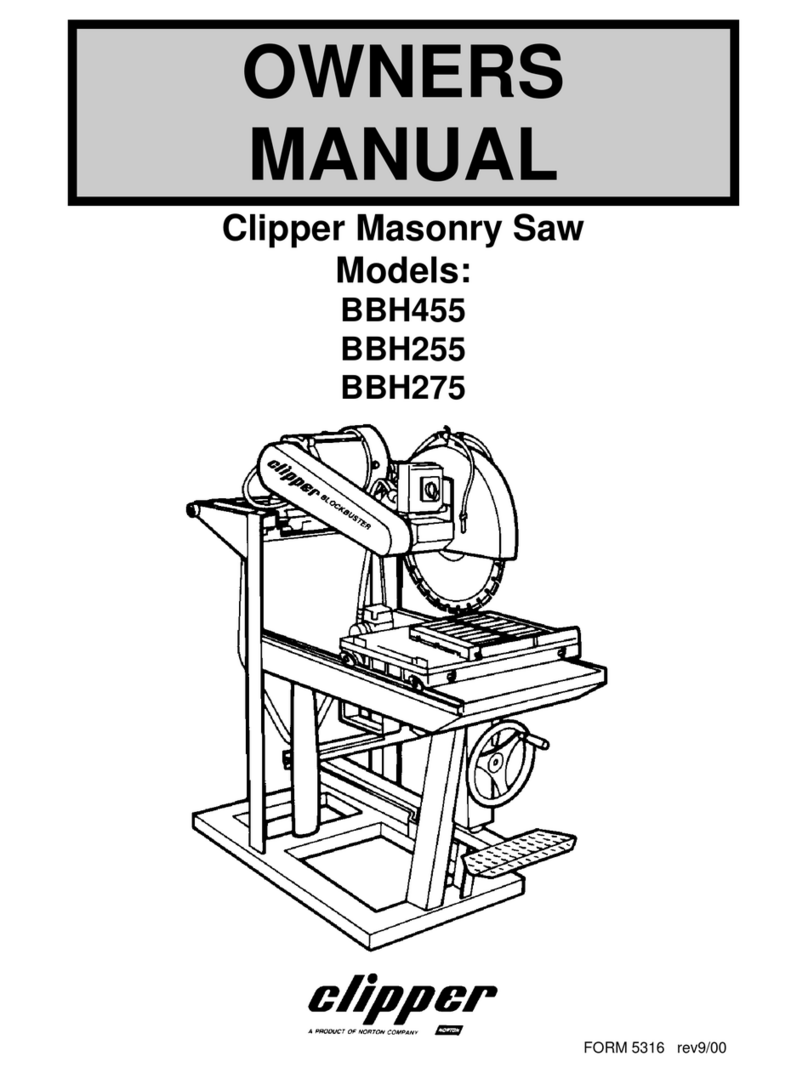
Clipper
Clipper BBH455 User manual

Clipper
Clipper BBM307 User manual
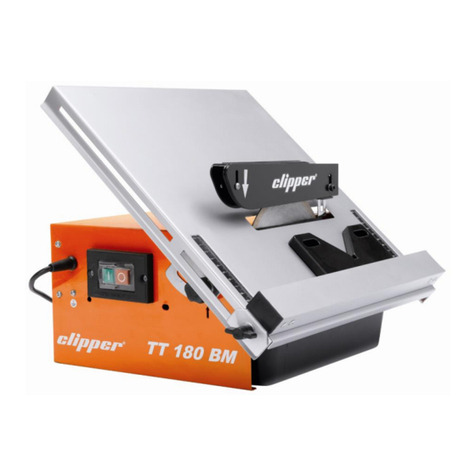
Clipper
Clipper TT 180 BM User manual

Clipper
Clipper NORTON JUMBO 651 HONDA User manual

Clipper
Clipper BBC157 User manual
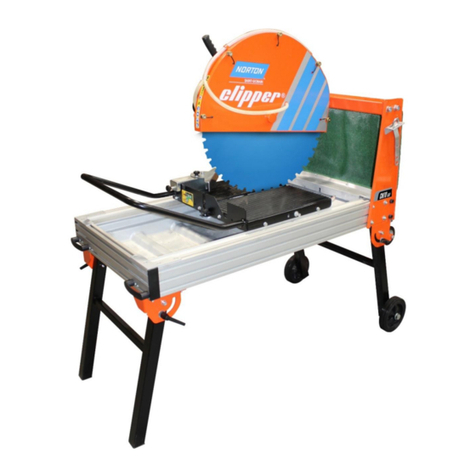
Clipper
Clipper CM70 ALU User manual
